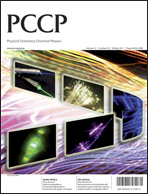A methodology is proposed for the prediction of the Gibbs energy of solvation (ΔSolvG) based on MD simulations. The methodology is then used to predict ΔSolvG of four solutes (namely propane, benzene, ethanol and acetone) in several solvents of different polarities (including n-hexane, n-hexadecane, ethylbenzene, 1-octanol, acetone and water) while testing the validity of the TraPPE force field parameters. Excellent agreement with experimental data is obtained, with average deviations of 0.2, 1.1, 0.8 and 1.2 kJ mol−1, for the four solutes respectively. Subsequently, partition coefficients (log P) for forty different solute/solvent systems are predicted. The a priori knowledge of partition coefficient values is of high importance in chemical and pharmaceutical separation process design or as a measure of the increasingly important environmental fate. Here again, the agreement between experimental data and simulation predictions is excellent, with an absolute average deviation of 0.28 log P units. However, this deviation can be decreased down to 0.14 log P units, just by optimizing partial atomic charges of acetone in the water phase. Consequently, molecular simulation is proven to be a tool with strong physical basis able to predict log P with competitive accuracy when compared to the popular statistical methods with weak physical basis.


 Please wait while we load your content...
Please wait while we load your content...